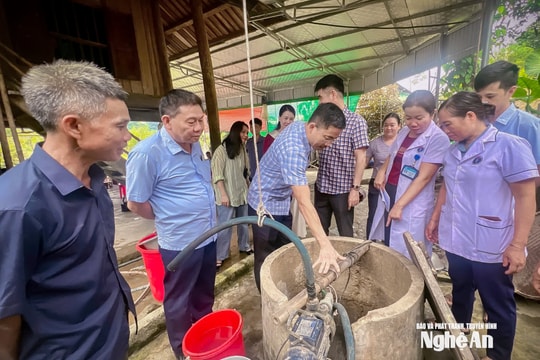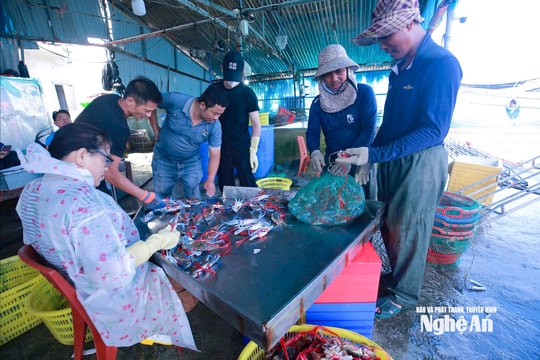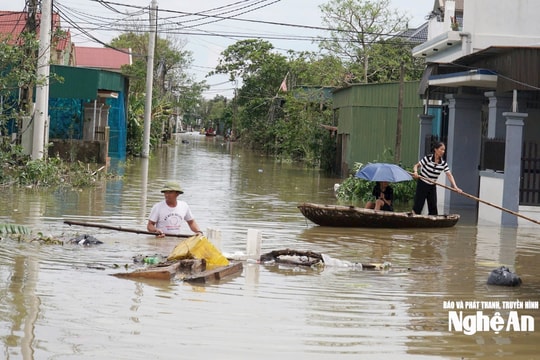Adapting to natural disasters
Storm No. 10 and Typhoon Yagi show that Vietnam cannot maintain the mindset of “post-storm relief”, but must switch to “active adaptation” from law, planning, infrastructure to financial mechanisms and technology.
Storm No. 10 left behind severe consequences: 66 people dead and missing, 164 injured, 349 houses collapsed, more than 172,000 houses damaged, nearly 1,500 schools and 145 medical facilities destroyed. Nearly 8,800 power poles fell, causing 2.7 million customers to lose power, with estimated damage of VND15,864 billion.
Around the same time last year, Typhoon Yagi caused serious damage: About 344 people died and went missing, nearly 2,000 people were injured, nearly 282,000 houses had their roofs blown off, 112,000 houses were deeply flooded, more than 284,000 hectares of rice and crops were damaged, and total economic damage exceeded 81,000 billion VND.
The two most recent major storms show that natural disasters are increasingly extreme, causing widespread impacts from coastal plains to mountainous areas, from floods and landslides to droughts and saltwater intrusion.
Hundreds of thousands of rural houses with corrugated iron roofs and wooden pillars could not withstand the storm. The already weak power grid, telecommunications, and irrigation systems could easily collapse. One storm was enough to disrupt the livelihoods of millions of households.

The World Bank estimates that in 2020 alone, climate change caused Vietnam to lose 3.2% of its GDP. Without drastic adaptation action, this figure could rise to 12-14.5% of GDP by 2050. With an economy currently worth more than $500 billion, that loss is too great.
The hardest hit are poor households, small farmers, ethnic minorities in mountainous areas, and coastal communities. They have lost their homes, their land, their livelihoods, and are unlikely to recover without assistance. The gap between who can and who cannot is increasingly clear.
Natural disasters have exposed longstanding weaknesses in infrastructure. Many dikes, reservoirs, and saltwater intrusion prevention sluices have deteriorated, their designs no longer suitable for new climate conditions. Rural houses lack construction standards, and urban areas are flooded after just a few heavy rains.
The disaster risk management system is still patchy. Residential planning still allows people to live in low-lying areas, river banks, and areas at risk of landslides. The financial response mechanism mainly relies on the reserve budget and calls for social support, which is unsustainable. The early warning system is still limited, so people in many places do not have time to take precautions.
Rapid development pressures – massive urbanization, resource exploitation, deforestation – are weakening the environment’s ability to protect itself. When climate change combines with these interventions, the damage is exacerbated.
Prime Minister Pham Minh Chinh emphasized in an online meeting on October 3: “The damage caused by storm No. 10 is huge, multifaceted, and at many levels, seriously affecting production and people's lives. Infrastructure is generally lacking and weak, and many projects have long failed to meet the requirements of natural disaster response. This is a profound lesson for us to continue to improve institutions, enhance risk management capacity, and better prepare for emergency situations.”
This statement shows that the key task is not only to recover from the storm, but also to reform institutions and change the approach from the root: planning, construction standards, financial mechanisms and management decentralization.
Short-term – emergency response. The government has set 9 urgent tasks after storm No. 10: Rescue victims, repair damaged houses, rebuild schools, restore electricity, water, and telecommunications. The deadline is very tight: Complete repairs to schools and medical stations before October 15; rebuild collapsed houses before December 15. The issue is not only progress, but also the quality of the construction to avoid the situation of “fighting the storm and then failing again”.
Medium term – build resilience. Need a comprehensive climate adaptation infrastructure program: Strengthening dikes, reservoirs, irrigation, power systems. Investing in modern, internationally connected climate data and early warning systems. Residential planning must be linked to risk maps, ending the practice of leaving people living in dangerous areas.
Long term – change the development model. The World Bank recommends that Vietnam follow two parallel paths: Resilience and emission reduction. To achieve the goal, it is necessary to invest about 368 billion USD by 2040, from the State budget, private capital and international financial sources. We cannot continue the approach of “develop first, fix later”, but must make climate change a mandatory factor in planning and investment.
Green economy, renewable energy, eco-cities, mangrove protection, sustainable marine economy – these are practical directions to both reduce emissions and increase resilience.
Typhoon No. 10 and Typhoon Yagi show that just one major natural disaster can wipe out months, even years of growth. Vietnam cannot maintain the mindset of “post-storm relief”, but must shift to “proactive adaptation”: from laws, planning, infrastructure to financial mechanisms and technology.
The question to ask is not “when will the storm come”, but: “When the storm comes, how prepared are we?”.




